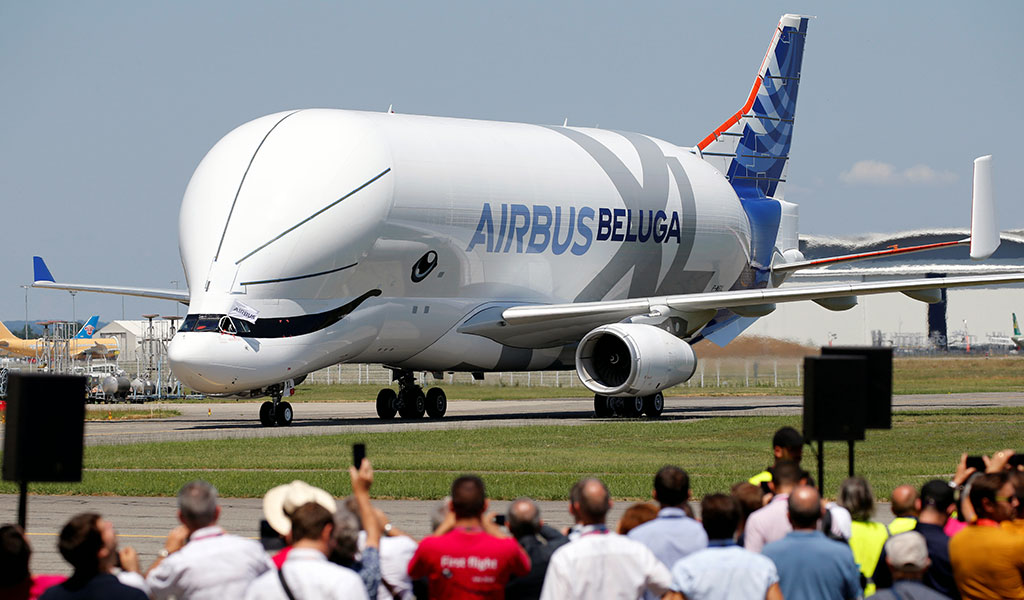
The BelugaXL has entered into service, providing Airbus with 30% extra transport capacity in order to support the on-going production ramp-up of commercial aircraft programmes.
The aircraft, which is an integral part of Airbus’ industrial system, made its first operational flight on 9 January. This is the first of six BelugaXL to begin work alongside the BelugaST predecessors, with the additional aircraft being introduced between 2020 and 2023.
Launched just over five years ago, in November 2014, the entry into service milestone marks yet another successful achievement for the internal aircraft programme that was awarded Type Certification by the European Aviation Safety Agency (EASA) in November 2019, following an intensive flight test campaign that saw the BelugaXL complete more than 200 flight tests, clocking over 700 flight hours.
At 63 metres long and 8 metres wide, the BelugaXL has the largest cargo bay cross-section of all existing cargo aircraft worldwide. The BelugaXL can carry two A350 XWB wings compared to the BelugaST, which can only carry one. With a maximum payload of 51 tonnes, the BelugaXL has a range of 4,000 km. (2200nm).
The BelugaXL is based on an A330-200 Freighter, enabling the re-use of existing components and equipment, and is powered by Rolls-Royce Trent 700 engines. The lowered cockpit, the cargo bay structure and the rear-end and tail were newly developed jointly with partners, giving the aircraft its distinctive look.
The BelugaXL is the latest addition to Airbus’ transportation portfolio. While air transport remains the primary method for transporting large aircraft components, Airbus also uses road, rail and sea transport to move parts between its production sites. Like the BelugaST, the aircraft will operate from 11 destinations in Europe, continuing to strengthen industrial capabilities and enabling Airbus to deliver on its commitments.
















